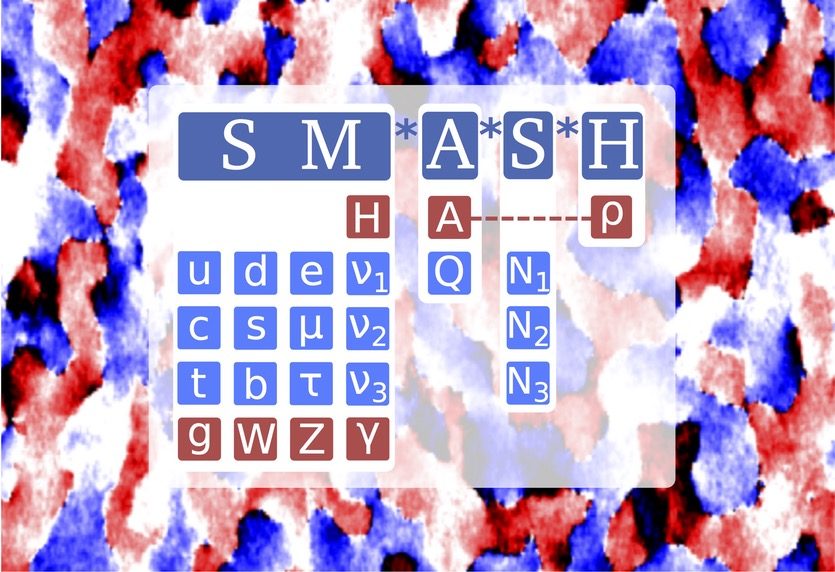It's five theories for the price of one. One of the most ambitious physics theories in recent times claims to have solved five of the biggest head-scratchers in particle physics - each of them likely worthy of a Nobel prize in their own right.
Crazy as the idea sounds, the paper describing it has managed to get past peer-review at Physical Review Letters - a prestigious journal that has catalogued many of the most groundbreaking moments in physics history, such as the discovery of gravitational waves last year.
The new theory adds six new particles to the standard model's current 17, and so ties up the mysteries of:
- What is dark matter?
- What caused inflation?
- Why is the neutrino so light?
- Why is there more matter than antimatter in the universe.
- AND they threw in a solution to problem with asymmetry in the strong force to boot.
They dub the resulting model SMASH (short for Standard Model Axion See-saw Higgs portal inflation)—though the name also works as a nod to how they "smashed" several existing theories together.
SMASH grew from the bottom up, explains study co-author Andreas Ringwald, in a statement.
"We started off with the standard model and only added as few new concepts as were necessary in order to answer the unresolved issues."
The theory explains the neutrino mass using the "see-saw" theory - giving each of our three known (very light) neutrinos a much heavier counterpart to balance it out. The imbalanced decay of these neutrinos into matter, rather than antimatter, also explains why matter dominates the universe.
SMASH predicts another new particle, called rho, which is a bit like the Higgs boson. Rho gives mass to neutrinos, as well as teaming up with the Higgs to drive the cosmic inflation in the first split second after the Big Bang.
To explain dark matter—the mysterious, invisible "stuff" that makes up 80% of the matter of the universe - the SMASH model invokes a particle called the axion, first predicted in 1977. The axion also sorts out the problem of why the strong nuclear force does not break symmetry as the standard model predicts, and so helps explain how the nuclei of atoms are held together.
It may sound like particle physics pick 'n' mix, but at least SMASH makes testable predictions.
For example, it predicts that the axion should have a mass of between 50 and 200 millionths of an electron volt - making it about 10 billion times lighter than the electron itself.
In 2015, the British physicist Christian Beck claimed that axions of 110 millionths of an electronvolt have been already detected using superconductor based detectors - although his results need to be validated by other groups.
Meanwhile the CULTASK experiment, launched last year in South Korea, is probing for axions in that range by watching for them converting into light in very high magnetic fields.
Pick 'n' mix or not, the SMASH theory will live or die at the hand of data from experiments.




Reader Comments